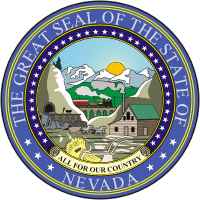Meet the New Bellwether States: Ohio and Nevada
Ohio has the longest current streak in the nation with 12 consecutive elections voting for the winning presidential candidate; Nevada has the highest rate over the last 100 years at 96 percent (24 of 25 cycles)

Ohio now owns the best-in-the-nation streak with 12 straight cycles seeing its Electoral College votes go to the eventual president.
Only one other state is within shouting distance – Nevada with eight – although the Silver State owns the best overall record in voting for presidential victors throughout the past 100 years.
Now, after the flip-flop in partisan control of the White House from 2004 to 2008, only seven other states are left with a streak of two or more cycles voting for the winning candidate: Florida with four, Colorado, Indiana, North Carolina, and Virginia with three, and Iowa and New Mexico with two.
Ohio’s bellwether status is certainly intact heading into the 2012 cycle, with the Buckeye State following the GOP wave that swept the nation overall in 2010.
Republicans in Ohio picked up the governor’s mansion, five US House seats, two state Senate seats, and 13 seats in the state House last November.
But this isn’t the first time Ohio voters have been in sync with the nation as a whole for a protracted period of time in presidential elections.
The Buckeye State also reeled off another 12 consecutive cycles voting for the winning candidate, beginning with William McKinley’s victory in 1896 all the way through Franklin Roosevelt’s third win in 1940.

And just how common are these multi-generational 40 to 50-year bellwether streaks?
There have been 24 instances across 21 states of 10 or more consecutive votes for the winning ticket in presidential elections since the birth of the nation.
However, all but five of these streaks ended by the mid-1970s – so the current Ohio run is noteworthy.
Aside from Ohio’s present streak, only the 12-cycle run in Missouri (1960-2004), 11-cycle streaks in Kentucky (1964-2004) and Tennessee (1964-2004), and the 12-cycle run in Delaware (1952-1996) have reached double digits since 1976.
Ohio is still a long ways away from holding the all-time bellwether crown, however, as they would still need to vote for the winning presidential candidate in not only 2012, but also 2016, 2020, 2024, and 2028.
Yet ahead of Ohio are:
· Missouri’s 13-cycle streak from 1904-1952 (Dwight Eisenhower lost the state in 1956 by 0.2 percent)
Five states with 14 consecutive cycles:
· Illinois: from 1920 through 1972 (Jimmy Carter lost by 2.0 points in 1976)
· Montana: from 1904 through 1956: (John Kennedy lost by 2.5 points in 1960)
· Idaho: from 1904 through 1956 (Kennedy lost by 7.6 points in 1960)
· Maryland: from 1892-1944 (Harry Truman was defeated by 1.4 points in 1948)
· Pennsylvania: from 1828-1880 (Grover Cleveland lost by 9.5 points in 1884)
And two states with a record 16 consecutive cycles:
· Nevada: from 1912-1972 (Carter lost by 4.4 points in 1976)
· New Mexico: from 1912-1972 (Carter lost by 2.5 points in 1976)
These eight aforementioned streaks were broken by an average of just 3.8 points.
States with 10 or More Consecutive Cycles Voting for Winners in Presidential Elections, 1789-present
|
State
|
Cycles
|
Years
|
|
Nevada
|
16
|
1912-1972
|
|
New Mexico
|
16
|
1912-1972
|
|
Illinois
|
14
|
1920-1972
|
|
Idaho
|
14
|
1904-1956
|
|
Montana
|
14
|
1904-1956
|
|
Maryland
|
14
|
1892-1944
|
|
Pennsylvania
|
14
|
1828-1880
|
|
Missouri
|
13
|
1904-1952
|
|
Ohio
|
12
|
1964-present
|
|
Missouri
|
12
|
1960-2004
|
|
Delaware
|
12
|
1952-1996
|
|
Minnesota
|
12
|
1920-1964
|
|
Arizona
|
12
|
1912-1956
|
|
Ohio
|
12
|
1896-1940
|
|
Kentucky
|
11
|
1964-2004
|
|
Tennessee
|
11
|
1964-2004
|
|
Utah
|
11
|
1916-1956
|
|
Washington
|
11
|
1916-1956
|
|
California
|
11
|
1916-1956
|
|
North Dakota
|
11
|
1916-1956
|
|
Wyoming
|
11
|
1900-1940
|
|
Texas
|
10
|
1928-1964
|
|
Kansas
|
10
|
1900-1936
|
|
Maryland
|
10
|
1789-1824
|
Data compiled by Smart Politics.
But even though Ohio holds the current longest streak in the nation, neither it nor the State of Missouri can lay claim to the highest overall rate during the past century.

During the past 100 years, Nevada has voted for the winner in every election except for 1976 when Jimmy Carter lost the Silver State by 4.4 points.
In 1960, Nevada was one of just three western states to vote Kennedy into office (along with Hawaii and New Mexico).
Nevada currently holds the second longest streak in the nation with eight straight cycles voting for the winning candidate.
After Nevada’s 96 percent rate over the past century are New Mexico, Ohio, and Missouri at tied for second with 92 percent, or 23 of 25 elections.
They are followed by Tennessee at #5 (88 percent, 22 elections) and Illinois, California, Delaware, Montana, Kentucky, and Florida tied for #6 (84 percent, 21 elections).
But the truth is a large number of states have nearly achieved the rank of bellwether status over the past century.
In fact, due do a fair number of landslide elections, all 50 states have voted for the winning candidate in a majority of presidential elections since 1912 (Alaska and Hawaii since 1960), and all but nine states have done so in more than two-thirds of such contests.
Overall, 16 states have voted for the winning candidate in 80 percent of elections during the past century, with 26 states at more than 75 percent of the time, and 41 states at more than 67 percent.
The states with the weakest bellwether credentials over the past century are mostly a mixture of deep southern states that largely voted Democratic before the Civil Rights Act of 1964 and northeastern states that voted solid Republican during the 1930s and 1940s.
Alabama and Mississippi are tied for last at just 52 percent – electing the winner in only 13 of 25 contests since 1912.
Georgia and South Carolina are tied for #43 at 60 percent (15 of 25).
Maine and Vermont – which both voted Republican through the five-cycle Democratic sweep from 1932 through 1948 – are tied at #46 with 56 percent (14 of 25). These northeastern states were the only two in the nation to never help elect Franklin Roosevelt in a single election.
Also failing to reach the two-thirds mark are Hawaii (#42, 61.5 percent), South Dakota (#43, 60 percent), and Alaska (#48, 53.8 percent).
The District of Columbia has voted for the winning ticket in just 5 of 12 races (all Democratic), or 41.7 percent, since 1964 when it received its first Electoral College votes.
But when looking ahead to the 2012 election, don’t forget about Missouri.
Although Missouri may have been given a little too much credit while holding its bellwether crown for the past half century, it should not be ignored now that its crown is lost.
But for 3,984 votes in 1956 and 3,903 votes in 2008, the Show Me State would be currently riding a 27-cycle streak.
Number of Cycles Voting for Presidential Election Winner by State, 1912-2008
|
Rank
|
State
|
Winners
|
Elections
|
% Won
|
|
1
|
Nevada
|
24
|
25
|
96.0
|
|
2
|
New Mexico
|
23
|
25
|
92.0
|
|
2
|
Ohio
|
23
|
25
|
92.0
|
|
2
|
Missouri
|
23
|
25
|
92.0
|
|
5
|
Tennessee
|
22
|
25
|
88.0
|
|
6
|
Illinois
|
21
|
25
|
84.0
|
|
6
|
California
|
21
|
25
|
84.0
|
|
6
|
Delaware
|
21
|
25
|
84.0
|
|
6
|
Montana
|
21
|
25
|
84.0
|
|
6
|
Kentucky
|
21
|
25
|
84.0
|
|
6
|
Florida
|
21
|
25
|
84.0
|
|
12
|
Maryland
|
20
|
25
|
80.0
|
|
12
|
New Hampshire
|
20
|
25
|
80.0
|
|
12
|
New Jersey
|
20
|
25
|
80.0
|
|
12
|
Idaho
|
20
|
25
|
80.0
|
|
12
|
Colorado
|
20
|
25
|
80.0
|
|
17
|
New York
|
19
|
25
|
76.0
|
|
17
|
Arizona
|
19
|
25
|
76.0
|
|
17
|
Utah
|
19
|
25
|
76.0
|
|
17
|
Connecticut
|
19
|
25
|
76.0
|
|
17
|
West Virginia
|
19
|
25
|
76.0
|
|
17
|
Wyoming
|
19
|
25
|
76.0
|
|
17
|
Oklahoma
|
19
|
25
|
76.0
|
|
17
|
North Carolina
|
19
|
25
|
76.0
|
|
17
|
Texas
|
19
|
25
|
76.0
|
|
17
|
Virginia
|
19
|
25
|
76.0
|
|
27
|
Wisconsin
|
18
|
25
|
72.0
|
|
27
|
Iowa
|
18
|
25
|
72.0
|
|
27
|
Massachusetts
|
18
|
25
|
72.0
|
|
27
|
Oregon
|
18
|
25
|
72.0
|
|
27
|
Pennsylvania
|
18
|
25
|
72.0
|
|
27
|
Rhode Island
|
18
|
25
|
72.0
|
|
27
|
Washington
|
18
|
25
|
72.0
|
|
27
|
Arkansas
|
18
|
25
|
72.0
|
|
35
|
Indiana
|
17
|
25
|
68.0
|
|
35
|
North Dakota
|
17
|
25
|
68.0
|
|
35
|
Michigan
|
17
|
25
|
68.0
|
|
35
|
Minnesota
|
17
|
25
|
68.0
|
|
35
|
Kansas
|
17
|
25
|
68.0
|
|
35
|
Nebraska
|
17
|
25
|
68.0
|
|
35
|
Louisiana
|
17
|
25
|
68.0
|
|
42
|
Hawaii
|
8
|
13
|
61.5
|
|
43
|
South Dakota
|
15
|
25
|
60.0
|
|
43
|
Georgia
|
15
|
25
|
60.0
|
|
43
|
South Carolina
|
15
|
25
|
60.0
|
|
46
|
Maine
|
14
|
25
|
56.0
|
|
46
|
Vermont
|
14
|
25
|
56.0
|
|
48
|
Alaska
|
7
|
13
|
53.8
|
|
49
|
Alabama
|
13
|
25
|
52.0
|
|
49
|
Mississippi
|
13
|
25
|
52.0
|
|
51
|
District of Columbia
|
5
|
12
|
41.7
|
Data compiled by Smart Politics.
Follow Smart Politics on Twitter.

No, the real bellwether is New Mexico. Since statehood in 1912, New Mexico has always voted for the popular vote winner, except for 1976, when it voted for Jerry Ford.
Excellent info. One may also want to consider “mitigating factors.” For example: a state that voted for the candidate who did not win the presidential election. Example was 1960 California. During the 20th century, there were just three elections in which Calif. was not in the column of the prevailing candidate: 1912, 1960, and 1976. NBC News, in fact, erroneously called Calif. for John Kennedy in a Democratic pickup of the White House. Turned out, Richard Nixon, failing to hold the White House for the Republican Party, kept the state in his column by a bare margin.
I meant to say that 1960 California was the “home” state of a presidential candidate who did not carry it — and, during the 20th century, there were two other occurrences in which Calif. did not vote for the winner: 1912, 1976. Richard Nixon was a “mitigating” factor; Calif. supporting its native son for the presidency that year. (Bare margin.)
There are 5 swing states left: VA, CO, FL, OH, & NV. Since 1992, these states have gone 2 1 way & 4 the other (or split 3-3). The other so-called swing states (NH, NM, IA, MN, WI, PA) have all gone blue. NC is red with 2008 being an anomaly.
The GOP are now underdogs with a 257-206 disadvantage going into elections. If democrats win VA and lose CO, FL, NV, & OH, they still end up in the White House.
In the wake of the just-concluded ’16 election, NV (along with NM, CO, VA, and NH) may well be moving out of the ‘bellweather’ group, even as WI, MI, and PA may be joining IA, NC, FL, and OH as the FULCRUM (i.e. holding the balance of power) states to look out for in the 2020 election (no re-match likely; not even all that certain that “thedonald” may stand for an additional 4-year tour of public service by then).